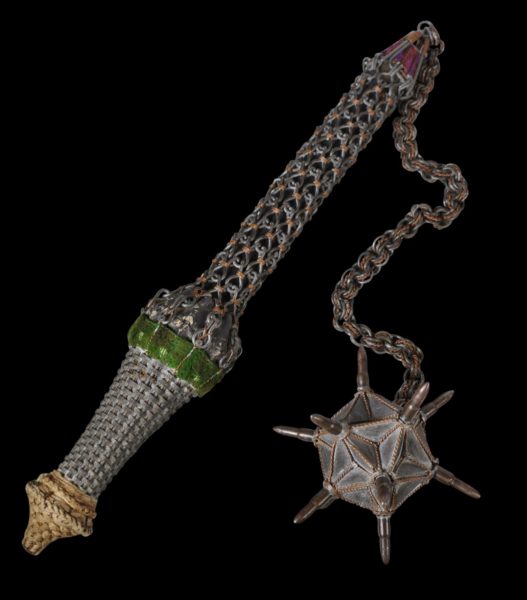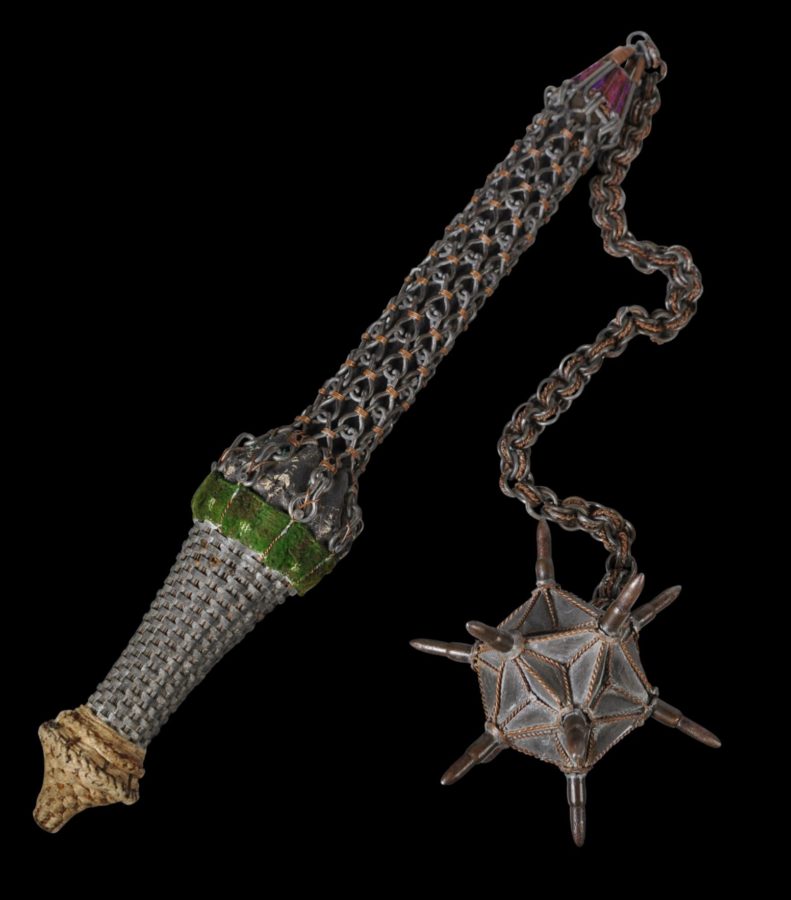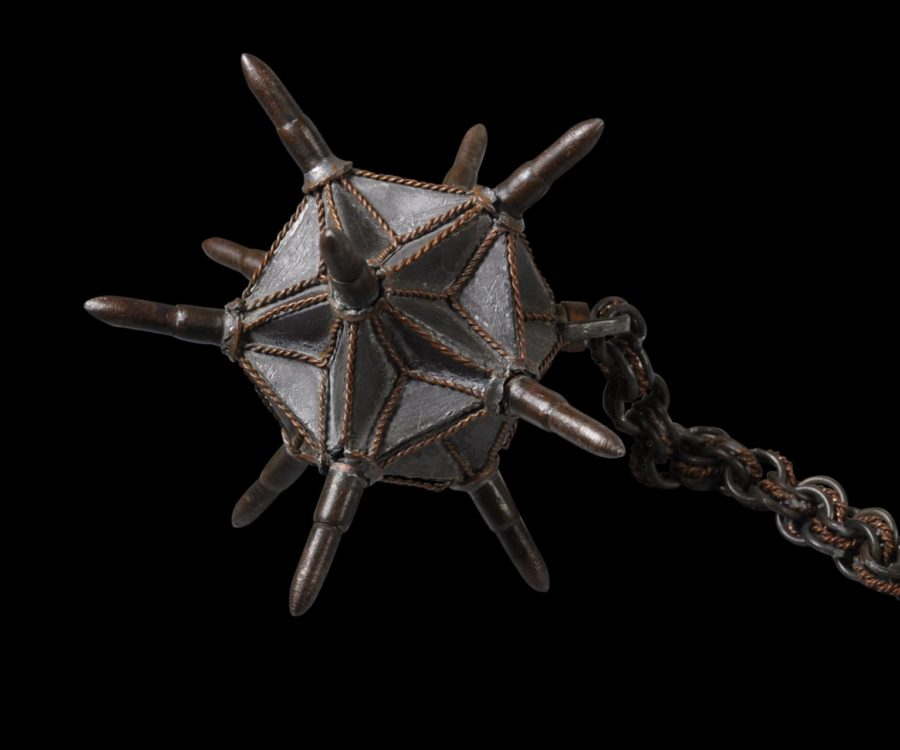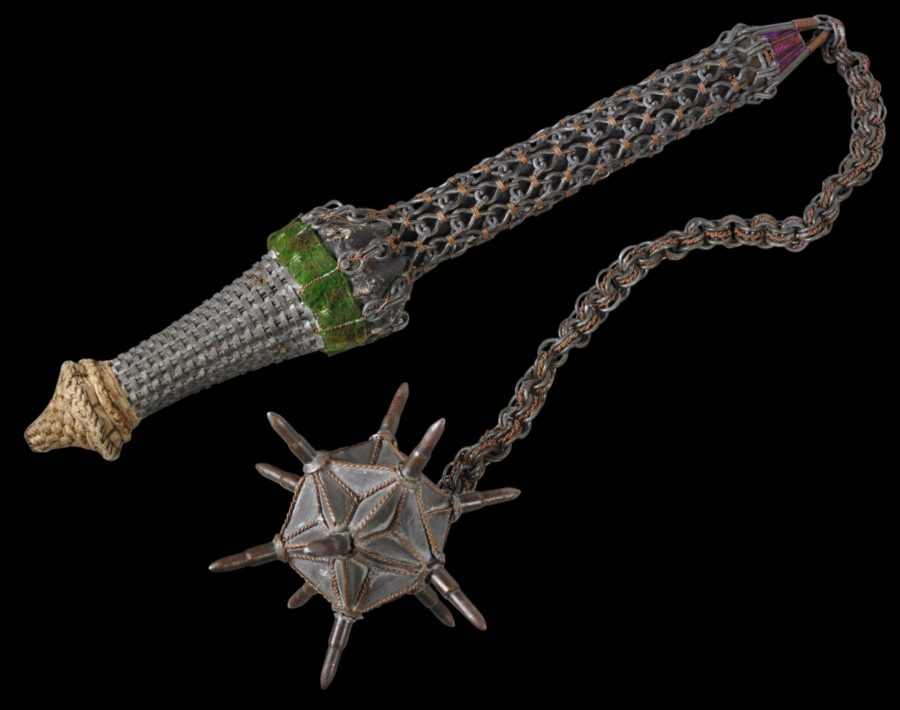This bizarre version of an unusual object is a symbolic whip that either a Sufi dervish would have used, or a Shiite adherent marking the anniversary of the battle at Kerbala.
It is extremely well crafted. The handle is of woven steel and chain mesh, with copper wire, and woven cotton cord. The interior is decorated with green velvet material (green being the colour of Islam) and a red velvet tip (probably to symbolise blood).
A chain is attached to the end and this is made of steel links through which fine twisted copper wire has been woven.
And at the end of the chain is a star-shaped ball of the most extraordinary construction. It comprises a heavy block of grey metal from which eleven bullet cartridges emerge to give the points of the star. Twisted copper wire decorates each edge of the ‘star’.
Devices such as these were used in Sufi dervish rites whereby adherents flagellated themselves and attempted to drive the spikes into their bodies without any apparent harm, thereby demonstrating their invulnerability to wounds and pain as a consequence of their ascetic practices.
Sometimes, dervish Sufis gave public demonstrations usually in exchange for donations for Islamic good causes, such as mosque construction. Adherents appeared in public places using such whips not only in Persia but northern India. In Indonesia, dabus was the term used to refer to a dervish, and dabus groups wandered from place to place performing acts of faith. The Kraton (Palace) Kaspuhan Museum in Cirebon, West Java, Indonesia has in its collection a variety of dabus implements, some of which are illustrated in Bennett (2005, p. 132).
Items such as this example might also have been used by more mainstream Shiite adherents. The Shiites today are followers of Ali whose son Hussein fought and was killed at a battle at Kerbala in 61 AH or 680 AD. In honour of Hussein’s memory annual processions are staged in Iran/Persia and elsewhere in which frenzied followers beat and whip themselves with chains and branches.
More usual examples are made of wood and simple chains. This is the most sophisticated example of such a whip that we have seen. It is in very good condition with little loss.
References
Bennett, J., et al., Crescent Moon: Islamic Art & Civilisation in Southeast Asia, Art Gallery of South Australia, 2005.





